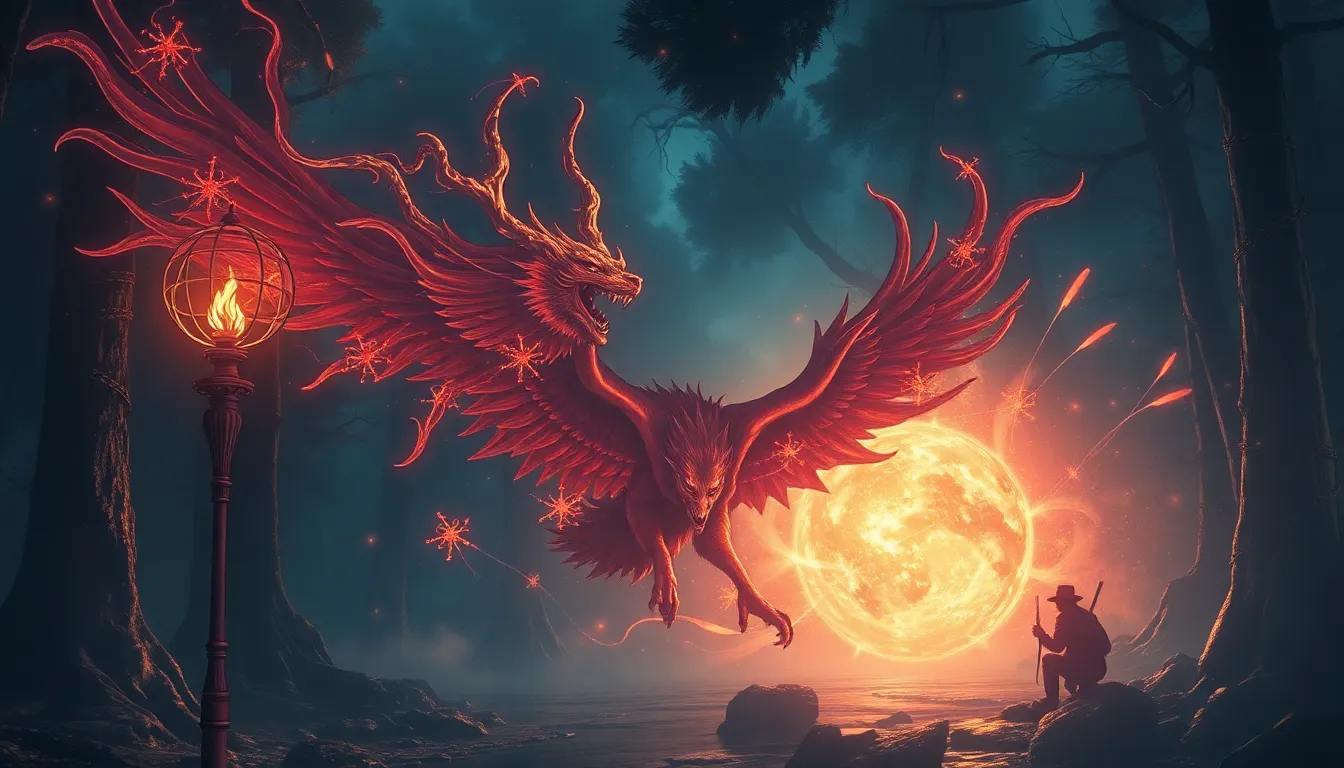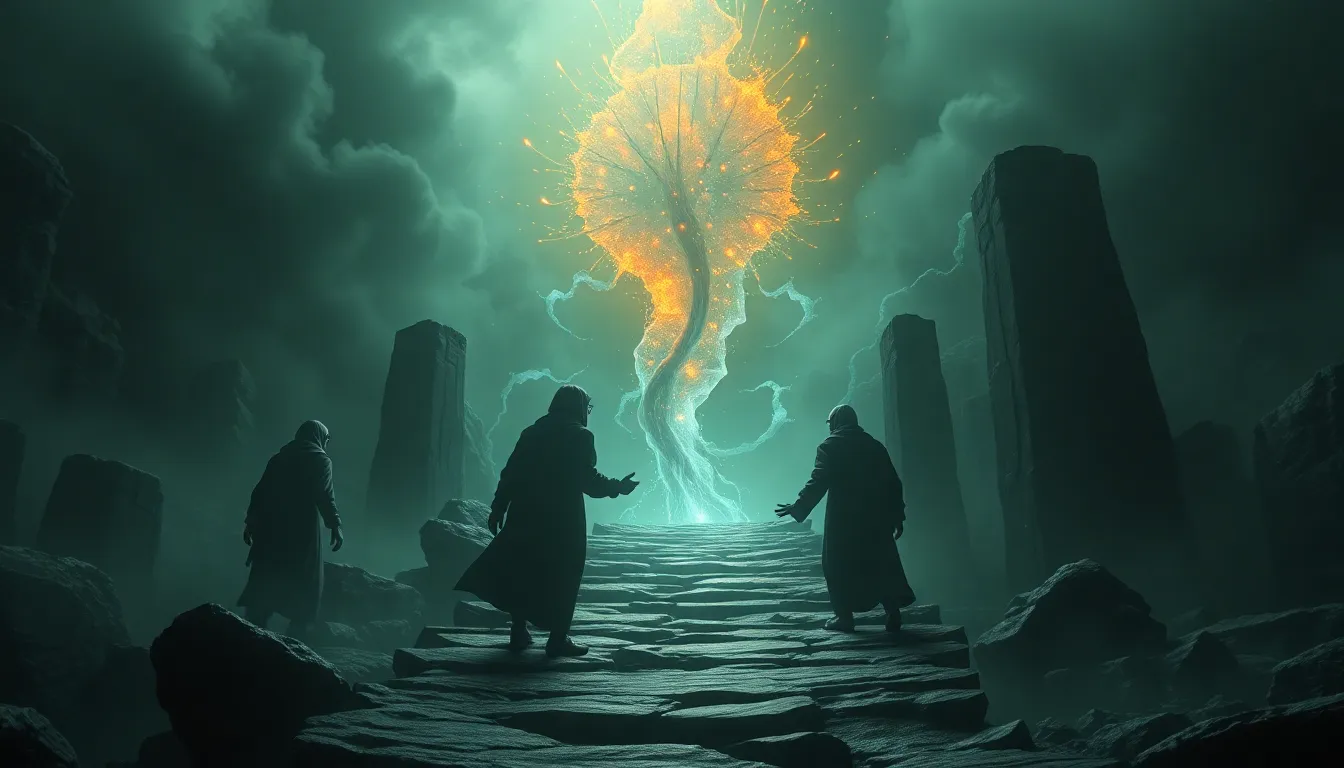The Sacred Sky: Celestial Locations in Mythology
I. Introduction
The concept of celestial locations in mythology refers to the various heavenly realms, cosmic entities, and significant astronomical features that have been woven into the fabric of mythological narratives across cultures. These locations often serve as abodes of deities, sites of cosmic events, or symbols of spiritual significance.
The sky holds a paramount place in the belief systems of numerous cultures, often representing the divine, the unknown, or the eternal. It has inspired countless stories that explain the natural world and humanity’s place within it. From the towering peaks of mythological mountains to the vastness of the cosmos, these celestial narratives provide insight into how ancient peoples understood their universe.
This article will explore various celestial locations in mythology, examining their significance, associated figures, and cultural impact across different civilizations.
II. The Cosmic Tree: Yggdrasil in Norse Mythology
Yggdrasil, the World Tree, is a central figure in Norse mythology, symbolizing the interconnectedness of all realms. This immense ash tree stands at the center of the cosmos, with its branches stretching into the heavens and its roots delving into the underworld.
The tree connects nine realms, each with its own unique characteristics:
- Asgard: The realm of the gods.
- Midgard: The world of humans.
- Helheim: The land of the dead.
- Jotunheim: The realm of giants.
- Alfheim: The home of the light elves.
- Svartalfheim: The realm of dark elves.
- Niflheim: The world of ice and mist.
- Muspelheim: The land of fire.
- Vanaheim: The realm of the Vanir gods.
Yggdrasil’s significance lies not only in its physical presence but also in its embodiment of the cyclical nature of life, death, and rebirth, which is a core element of Norse cosmology.
III. Mount Olympus: The Dwelling of the Greek Gods
In Greek mythology, Mount Olympus is the majestic home of the Olympian gods, serving as a divine abode above the mortal world. This mountain, often shrouded in clouds, symbolizes the height of power and the divine order.
Key deities associated with Mount Olympus include:
- Zeus: The king of the gods and ruler of Mount Olympus.
- Hera: The queen of the gods, protector of marriage.
- Poseidon: God of the sea and earthquakes.
- Athena: Goddess of wisdom and warfare.
- Apollo: God of the sun, music, and prophecy.
The cultural impact of Mount Olympus extends into art, literature, and philosophy, inspiring countless works that explore themes of heroism, morality, and the complexities of the divine.
IV. The Celestial Sphere: Chinese Mythology and the Sky
In Chinese mythology, the celestial sphere is a fundamental concept that represents the heavens and its divine order. Central figures in this belief system include the Jade Emperor, the supreme ruler of heaven, and the Queen Mother of the West, a goddess associated with immortality and the afterlife.
Festivals and traditions tied to celestial events are deeply ingrained in Chinese culture, such as:
- Mid-Autumn Festival: Celebrating the harvest moon and family reunions.
- Qingming Festival: A time to honor ancestors and enjoy the springtime.
- Double Seventh Festival: Celebrating the meeting of the cowherd and the weaver girl, symbolizing love.
These festivals highlight the connection between celestial events and human experiences, emphasizing the importance of the sky in Chinese mythology.
V. The Milky Way: Pathways of the Ancients
The Milky Way has featured prominently in the myths of various cultures, often viewed as a pathway or bridge connecting the earthly realm to the divine. For instance, in Aboriginal Dreamtime stories, the Milky Way represents the spirits of ancestors traveling across the sky.
In Native American mythology, the Milky Way is often seen as a celestial river or road, with various tribes attributing different meanings to it. Common themes include:
- A pathway for souls: A route for the spirits of the deceased.
- A bridge for the living: Connecting the earth to the sky.
- Seasonal markers: Guiding agricultural practices and timing.
These stories and legends illustrate the Milky Way’s significance in understanding the cosmos and humanity’s place within it.
VI. The Star Clusters: Pleiades and Its Variants
The Pleiades, a prominent star cluster, holds significant importance in various cultures. Known as the “Seven Sisters,” this cluster has inspired myths and rituals for centuries. Different cultures interpret the Pleiades in unique ways:
- Greek Mythology: Associated with the daughters of Atlas, representing guidance and navigation.
- Native American Cultures: Often linked to planting and harvesting seasons.
- Maori Mythology: Known as Matariki, marking the new year and the arrival of winter.
Rituals and agricultural practices linked to the Pleiades demonstrate its enduring influence on human life and seasonal cycles, while modern interpretations continue to reference this star cluster in various media and cultural contexts.
VII. The Underworld and the Sky: Dual Realms in Mythology
The interplay between celestial realms and the underworld is a recurring theme in mythology. Many cultures depict these two realms as interconnected, representing the cycle of life and death. In Egyptian mythology, the Duat is the underworld, while the sky is personified by the goddess Nut, who swallows the sun each night and gives birth to it each morning.
Myths exploring the journey between these realms often highlight transformation and rebirth, such as:
- Orpheus and Eurydice: The descent into the underworld and the attempt to return.
- Inanna’s Descent: The Sumerian goddess’s journey to the underworld and her subsequent resurrection.
This duality symbolizes the cyclical nature of existence, where life and death are inseparable, enriching the understanding of human experience.
VIII. Celestial Animals: Mythical Creatures of the Sky
Many mythologies feature sky-related mythical creatures that embody various attributes and powers. These celestial animals often serve as symbols of strength, transformation, or divine intervention. Notable examples include:
- Dragons: Common in Asian mythologies, representing power and wisdom.
- Phoenix: A symbol of rebirth and immortality in various cultures.
- Thunderbirds: Found in Native American mythology, representing strength and power over storms.
These creatures are often depicted in art and literature, signifying their cultural significance and the values they represent across different societies.
IX. Astrological Influences: The Sky’s Impact on Human Destiny
Astrology has played a significant role in various cultures, with celestial bodies believed to influence human behavior and destiny. Ancient civilizations observed the movements of planets and stars, interpreting these celestial events as signs or omens.
Key elements of astrology in mythology include:
- Zodiac Signs




